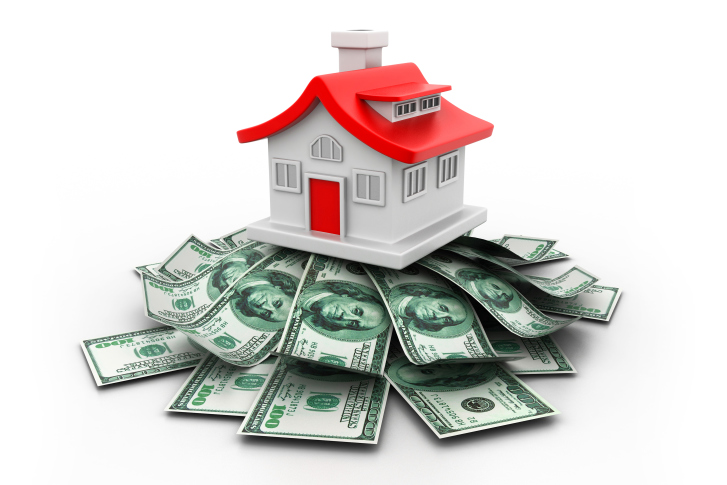 Sales of previously owned homes dropped in August by 4.80 percent on an annual basis for the first time in four months; the dip was likely caused by rising home prices. August sales were reported at a rate of 5.31 million; July’s rate was 5.58 million sales of previously owned homes.
Sales of previously owned homes dropped in August by 4.80 percent on an annual basis for the first time in four months; the dip was likely caused by rising home prices. August sales were reported at a rate of 5.31 million; July’s rate was 5.58 million sales of previously owned homes.
Sales of existing homes have risen 6.20 percent year-over-year; stronger labor markets and low mortgage rates were seen as contributing factors. Although economists expect the Federal Reserve to raise its target federal funds rate before year end, home sales are expected to stay strong through 2016. A Fed rate hike would mean that lending rates for consumer credit and mortgage loans would increase.
Analysts noted that July sales of pre-owned homes hit a post-recession high and characterized August’s lower reading as a “hiccup.” Month-to-month readings often reflect volatility caused by transitory influences; analysts typically rely on month-to-month rolling averages to track trends in housing markets.
Home Sales Thwarted by Slim Supply of Available Homes
Low inventories of homes for sale are likely keeping sales of previously owned homes from achieving their potential. In August, there were 2.29 million homes on the market, which represents a 5.20 month supply under current market conditions. August’s volume of available homes was 1.70 percent lower than for August 2014.
The national median sale price for a home was $228,700 in August; this represents a year-over-year increase of 4.70 percent.
First-time Buyers Getting Back in the Game
First-time home buyers accounted for 32 percent of existing home sales in August as compared to a normal reading of 40 percent of existing home sales. Investors purchased 12 percent of pre-owned homes sold in August as compared to a post-recession high of 25 percent. Less competition from investors should allow more owner-occupant buyers to purchase homes without being priced out of bidding wars.
On another positive note, distressed sales of pre-owned homes comprised only 7 percent of sales, this is a strong indication that the tide of post-recession foreclosures is ending.
FHFA House Price Index Also Shows Higher Home Prices
FHFA, the agency that oversees Fannie Mae and Freddie Mac, reported that home prices of homes associated with mortgages owned or backed by the two government-sponsored entities rose by 0.60 percent in July as compared to June’s reading of 0.20 percent. Home prices were up 5.80 percent year-over-year in July, which is 1.10 percent below the peak index reading of 2007 and was near the November 2006 index reading.
Year-over-year home price readings for the nine census divisions were all positive and ranged from + 2.20 percent in the New England division to +9.40 percent in the Mountain division. Month-to month house prices ranged from -1.20 percent in the New England division to +1.60 percent in the Mountain division.
 When making the decision to purchase a home, there can be an array of questions to ask regarding location, size, style and additional features that will complicate things. If one of the considerations among these is whether to buy new or old, though, you may want to be aware of new home warranties. While buying new can seem like a risk, this type of warranty may help make at least one decision easy when it comes to your home purchase.
When making the decision to purchase a home, there can be an array of questions to ask regarding location, size, style and additional features that will complicate things. If one of the considerations among these is whether to buy new or old, though, you may want to be aware of new home warranties. While buying new can seem like a risk, this type of warranty may help make at least one decision easy when it comes to your home purchase. Last week’s economic releases included several reports related to housing. The Wells Fargo/NAHB Housing Market Index achieved its highest reading in nearly 10 years. Housing Starts dipped in August and Building Permits issued in August exceeded July expectations. The week’s big news was actually no news. The Fed’s Federal Open Market Committee decided not to raise interest rates. Fed Chair Janet Yellen followed up on the FOMC statement with a press conference and said that the Fed is not yet ready to raise rates, but that a majority of FOMC members are prepared to raise rates before year-end.
Last week’s economic releases included several reports related to housing. The Wells Fargo/NAHB Housing Market Index achieved its highest reading in nearly 10 years. Housing Starts dipped in August and Building Permits issued in August exceeded July expectations. The week’s big news was actually no news. The Fed’s Federal Open Market Committee decided not to raise interest rates. Fed Chair Janet Yellen followed up on the FOMC statement with a press conference and said that the Fed is not yet ready to raise rates, but that a majority of FOMC members are prepared to raise rates before year-end. Selling a home is more than real estate listings and making the home appealing to potential buyers. One factor to take into account when buying a home is its location, meaning the community surrounds the home.
Selling a home is more than real estate listings and making the home appealing to potential buyers. One factor to take into account when buying a home is its location, meaning the community surrounds the home. It might seem like selling a home and moving to a new place is enough pressure on its own, but buyer’s remorse is a well-known phrase for a reason. If you’re currently considering a home and are concerned about taking the plunge into purchasing, here are three strategies you will want to utilize before making a final decision.
It might seem like selling a home and moving to a new place is enough pressure on its own, but buyer’s remorse is a well-known phrase for a reason. If you’re currently considering a home and are concerned about taking the plunge into purchasing, here are three strategies you will want to utilize before making a final decision. The National Association of Home Builders (NAHB) / Wells Fargo Housing Market Index reported that home builder confidence rose by one point to a reading of 62 for September. This was the highest reading since November 2005, when the NAHB reported a reading of 68 for home builder confidence. Any reading above 50 indicates that more builders are confident about housing market conditions than those who are not.
The National Association of Home Builders (NAHB) / Wells Fargo Housing Market Index reported that home builder confidence rose by one point to a reading of 62 for September. This was the highest reading since November 2005, when the NAHB reported a reading of 68 for home builder confidence. Any reading above 50 indicates that more builders are confident about housing market conditions than those who are not. With mortgage bubbles and real estate issues still in recent memory, one might feel that their best option is to buy their next home using cash instead of borrowing the necessary funds. In today’s article we’ll explore the pros and cons of paying cash for that next house or condo.
With mortgage bubbles and real estate issues still in recent memory, one might feel that their best option is to buy their next home using cash instead of borrowing the necessary funds. In today’s article we’ll explore the pros and cons of paying cash for that next house or condo. It’s amazing that in a year with extremely low mortgage rates being reported around the country, closing costs are up by as much as 6% from the previous year. Part of the reason for this is that the stricter regulations on loans have increased the costs to banks, and they always find a way to pass on new costs to the consumer.
It’s amazing that in a year with extremely low mortgage rates being reported around the country, closing costs are up by as much as 6% from the previous year. Part of the reason for this is that the stricter regulations on loans have increased the costs to banks, and they always find a way to pass on new costs to the consumer. A short week after the Labor Day Holiday provided a slack schedule for economic news. Bloomberg reported that residential investment for the second quarter of 2015 represented 3.34 percent of the Gross Domestic Product. Compared to the long-term average reading of 4.56 percent, analysts said that the Q2 15 reading suggested pent-up demand in the housing market that could help propel the economy through any setbacks that could occur when the Fed raises rates.
A short week after the Labor Day Holiday provided a slack schedule for economic news. Bloomberg reported that residential investment for the second quarter of 2015 represented 3.34 percent of the Gross Domestic Product. Compared to the long-term average reading of 4.56 percent, analysts said that the Q2 15 reading suggested pent-up demand in the housing market that could help propel the economy through any setbacks that could occur when the Fed raises rates.